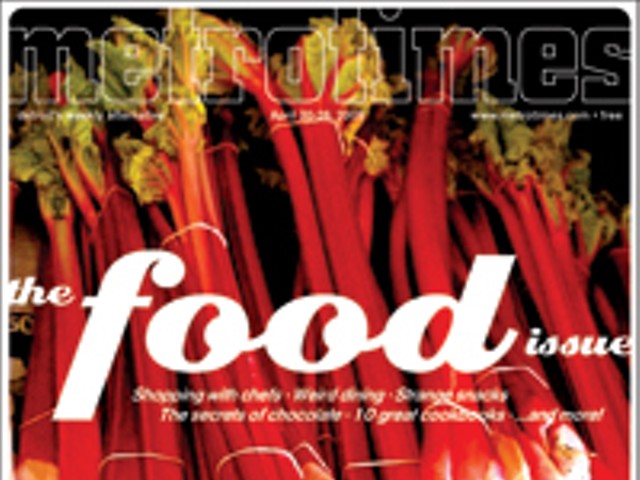The one bug that I intentionally ate wasn’t too bad. It may have been a grasshopper, hard to tell. It was crispy, seemed to have been roasted and had a sticky, candy-like coating the color of stained cherrywood.
It was part of breakfast served in a beautifully enameled bento box in a ryokan, a traditional Japanese inn, in Kyoto. I never was sure what half of the stuff in that box was; no one in the inn spoke English, and I had only enough Japanese to avoid regularly embarrassing myself. But I ate it all, and recognized the bug later on the label of a can in a Japanese grocery. By the way, it’s not unusual to have a tall, cold beer with breakfast in Japan, and I went along with that too. Helped wash down those wings and legs.
The use of the word “intentionally” up above is meant to separate that instance from the unknowable number of times I’ve eaten insects and parts without a clue. So have you. Many of them. A fact sheet published by Ohio State University estimates that each of us scarfs down a pound or two a year in foods as diverse as strawberry jam, applesauce, spaghetti sauce, just about anything containing fruits and vegetables. Ever seen anybody picking over the apples, looking for wormy ones, to be crushed in a cider mill for that tasty — and cloudy — drink?
It might interest you to know that the feds have standards for “acceptable levels of filth” in everything from baby food to canned chili. But including rodent hair and insect parts in the same category does a disservice to the bugs and the millions of people who’ve eaten them for centuries as a routine and important source of protein, vitamins and minerals in their diets.
There’s an almost pretty word for eating bugs — entomophagy. And there are enough serious-minded scientists and nutritionists studying and promoting bugs as an important food source in this country that such insects have been given a commercial name — microlivestock. (“Hey, pard, ya recollect that herd we drove hard from Kansas City to Chicago? Bad-tempered critters; kept the grubdogs busy from sunup to sundown. Keep movin’, ya maggots!”)
Makes your skin crawl, doesn’t it?
But as the world gets smaller, as we — for a change — are beginning to be influenced by a wider variety of other cultures and nations, just as we’ve influenced them for so long, our notions of food are steadily changing. How many of us would have predicted the mainstreaming of sushi in the American diet?
Of course, our differences are cultural and most cultures have their taboos. In much of Asia, Africa and Australia, in Central and South America, heaps of toasted, roasted, fried and boiled insects are displayed and sold in open-air markets. We might gag at things in a Hindu’s diet, but he’d do the same with a cheeseburger.
They’re also commercially packaged for storage and convenience. The Web site thailandunique.com offers an admirable, and imposing, variety of canned critters, including mole crickets, giant water beetles, grasshoppers, bamboo worms, silkworm pupae, “mixed baked roasted bugs,” dried red ant eggs and roasted whole scorpions — also sold preserved in vodka or whiskey for that unusual cocktail item. (If you want a real social showstopper, send for some King Cobra Whiskey, infused with ginseng, “seed pods” and a whole, farm-raised baby king cobra, coiled and looking out through dead eyes, on tap to infuse your masculine energy and stamina. There’s another herbal whiskey drink called Ya Dong, which I surmise is for much the same thing.)
One of the most important rites for young tribesmen in Benin surrounds their circumcision, when a dog is chosen from among family and village pets, clubbed to death — its blood smeared on a spirit fetish — and thrown into a fire for an entrée served to the as-yet-untipped honorees and their elders. Live and skinned cats are sold in open markets in some cultures. Horse meat filled a lot of shrunken British bellies during World War II. Our standards can change when we’re in a pinch.
Which may be what it takes before bug merchants make any significant inroads into the often-execrable American diet. It’s hard to foresee a time when, instead of trashing a whole bag of flour because a few weevils turn up in your sifter, cans and bags of the things are served as party snacks and side dishes. But it could, probably should, and maybe will happen as our country continues to undergo cultural change.
Just now, I’m munching on a little nugget that’s very sweet and a touch salty, has a shell that gives way with a delicate snap, melts smoothly in the warmth of my mouth and has a distinctly nutty aftertaste. For the time being, it’s hard to beat those M&M peanuts.
I’m not ready yet.
Ric Bohy is editor of Metro Times. Send comments to [email protected]




